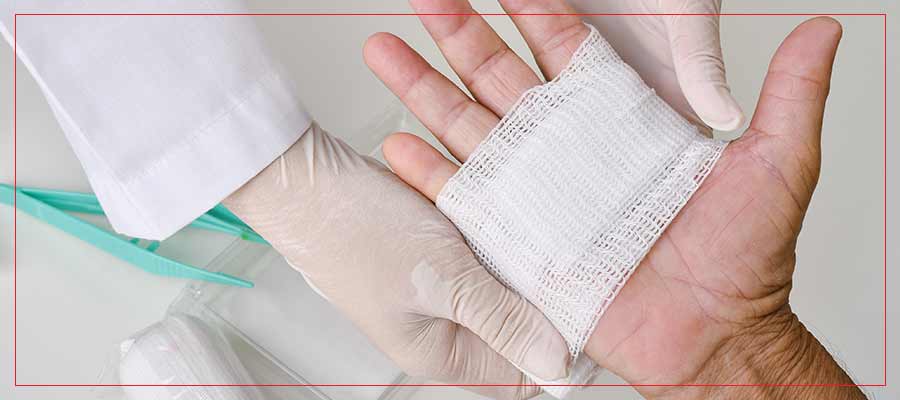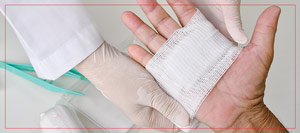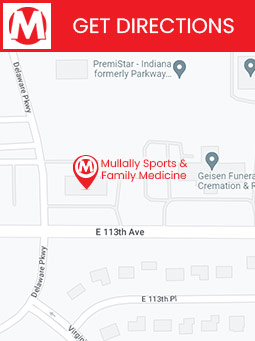Laceration Repair Clinic in Crown Point, IN
Lacerations, or cuts, are common injuries that can occur at any time. While some lacerations may heal on their own, others require medical attention to prevent infection and promote healing. Laceration repair is a process that involves cleaning the wound, examining the extent and severity of the injury, and using local anesthesia to numb the area. If you have a tear or cut in your skin, tissue, and or muscle, you may need to have a laceration repair. At Mullally Sports & Family Medicine we offer comprehensive and quality care! Contact us today for more information or book an appointment. We are conveniently located at 11275 Delaware Pkwy Suite A, Crown Point, IN 46307.




Table of Contents:
What is laceration repair?
What are the most common types of lacerations?
Is laceration repair a surgical procedure?
What happens if you don’t close a laceration?
Laceration repair is a process that involves several steps to ensure proper healing and prevent infection. The first step is to clean the wound thoroughly to remove any dirt, debris, or bacteria that may have entered the wound. This is done using a sterile solution and may involve irrigation to flush out any foreign matter. Once the wound is clean, the healthcare provider will examine the injury to determine the extent and severity of the laceration. This is important because it will help determine the best method of wound closure. Finally, the healthcare provider will numb the area with local anesthesia to reduce pain during the repair process.
Laceration repair is essential to prevent further bleeding and infection, promote faster healing, and reduce scarring. Without proper repair, a laceration can become infected and lead to complications such as sepsis. Proper repair also helps to restore the function and appearance of the affected area. For example, a laceration on the face can be repaired to reduce scarring and restore the person’s confidence. In addition, laceration repair can help prevent long-term complications such as nerve damage or loss of function in the affected area.
Despite the importance of laceration repair, there are common misconceptions that can prevent people from seeking medical attention. Some people believe that wounds should be left to heal on their own, but this can lead to complications such as infection or scarring. Others may be reluctant to seek medical attention due to fear or cost, but delaying treatment can lead to more extensive and costly procedures in the future. Finally, some people may misunderstand the risks and benefits of different methods of wound closure, such as stitches, staples, or adhesive strips. It is important to discuss these options with a healthcare provider to determine the best course of action for each case.
Laceration repair is a crucial medical procedure that can prevent infection, promote healing, and restore function and appearance to the affected area. Understanding the process and importance of laceration repair can help people make informed decisions about seeking medical attention for their injuries. By dispelling common misconceptions about laceration repair, we can ensure that people receive the proper care they need to recover from their injuries.
Laceration: Caused by compression of the skin between the weapon and the bone.
Cuts: Cuts are caused by a protruding surface of an object being dragged across the skin.
Strain cracks: Occurs as a result of a strong blunt impact on a tight localized area of skin, causing the excessive stretching of the skin.
Perforation Laceration: Caused by an object that can penetrate the skin.
Explosion cracks: due to the localized explosive action of expanding gases.
Cuts: Caused by a blunt instrument.
Crush crack: Occurs as a result of a crush injury, in which the damage is caused by a protruding bone fragment.
Ungloved cut: caused by friction on the body causing the skin to peel away from the underlying tissue.
Lacerations are a common injury that can occur as a result of a variety of accidents. While some lacerations may be minor and require little medical attention, others can be more severe and require immediate treatment. Neglecting to close a laceration can have serious consequences, including delayed healing, increased risk of infection, and disfigurement.
Surgical repair of lacerations is required as long as the laceration is recent and large enough to require stitches. Very small cuts or punctures usually do not require surgical repair. In most cases, lacerations less than 1 cm in length do not require stitches.
An unclosed laceration is characterized by a visible wound opening, debris or foreign objects within the wound, and inflammation and redness around the wound. The visible wound opening can range from a small cut to a deep gash, depending on the severity of the injury. Debris or foreign objects can include dirt, gravel, or other materials that may have entered the wound at the time of injury. Inflammation and redness around the wound are signs of an immune response to the injury, indicating that the body is attempting to heal the wound.
Neglecting to close a laceration can have serious consequences. Delayed wound healing and prolonged recovery time are common when a laceration is left open. The longer a wound remains open, the greater the risk of infection and sepsis. Infection can lead to more serious complications, such as blood poisoning or even death. Scar formation and disfigurement are also possible outcomes of an unclosed laceration. Scarring can be particularly problematic if the wound is in a visible area, such as the face or hands.
Seeking medical attention for a laceration is crucial to prevent complications and ensure proper wound closure. Medical professionals can clean and remove debris from the wound, reducing the risk of infection. They can also assess the severity of the injury and determine the best method for closing the wound. Proper wound closure techniques, such as sutures or staples, can minimize the risk of infection and promote faster healing. Timely treatment can prevent complications and long-term consequences, such as scarring or disfigurement.
Laceration repair is available at Mullally Sports and Family Medicine. We serve clients from Crown Point IN, Winfield IN, Schererville IN, St. John IN, Cedar Lake IN, Munster IN, Lowell IN, DeMotte IN, as well as other Northwest Indiana locations.

Check Out Our 5 Star Reviews


Additional Services You May Like

Additional Services You May Like
- Acute and Chronic Illness
- Annual Wellness Exams
- Concussion Management
- Lab Testing
- Medical Weight Loss Management
- Primary Care
- PRP Injections
- Regenerative Cell Therapy
- Same Day Sick Visits
- Shockwave Lab
- Actinic Keratosis
- Allergy Care
- Botox for Migraine
- Cosmetic Skin Treatment
- Cyst Removal
- Ear Wax Removal
- EKG
- Flu Shots
- Fracture
- Immunizations
- Laceration Repairs
- Moles
- Molluscum Contagiosum
- Mullally Medspa Services
- Nebulizer Treatment
- Nutrition And Exercise Management
- Pregnancy Testing
- Pulse Oximetry
- Respiratory Care
- Skin Tag Removal
- Spirometry
- Strep and Flu
- Surgical Clearance
- TB Testing
- Ultrasound Guided Injections
- Warts
- Women’s Health
- X-Ray
- EPAT Therapy
- EMTT Therapy
- Pediatrics




